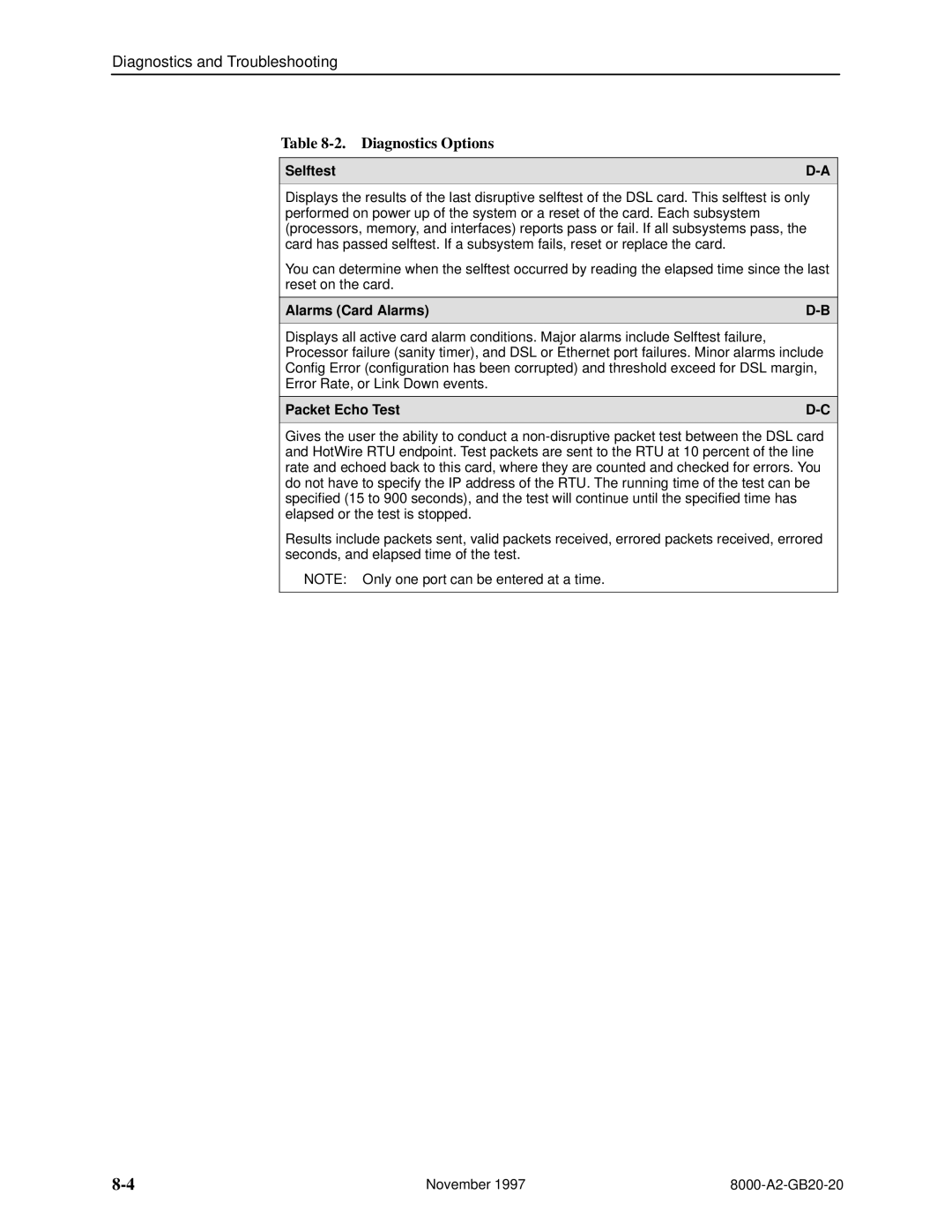
Diagnostics and Troubleshooting
Table 8-2. Diagnostics Options
Selftest | |
|
|
Displays the results of the last disruptive selftest of the DSL card. This selftest is only performed on power up of the system or a reset of the card. Each subsystem (processors, memory, and interfaces) reports pass or fail. If all subsystems pass, the card has passed selftest. If a subsystem fails, reset or replace the card.
You can determine when the selftest occurred by reading the elapsed time since the last reset on the card.
Alarms (Card Alarms) | |
|
|
Displays all active card alarm conditions. Major alarms include Selftest failure, Processor failure (sanity timer), and DSL or Ethernet port failures. Minor alarms include Config Error (configuration has been corrupted) and threshold exceed for DSL margin, Error Rate, or Link Down events.
Packet Echo Test | |
|
|
Gives the user the ability to conduct a
Results include packets sent, valid packets received, errored packets received, errored seconds, and elapsed time of the test.
NOTE: Only one port can be entered at a time.
November 1997 |
